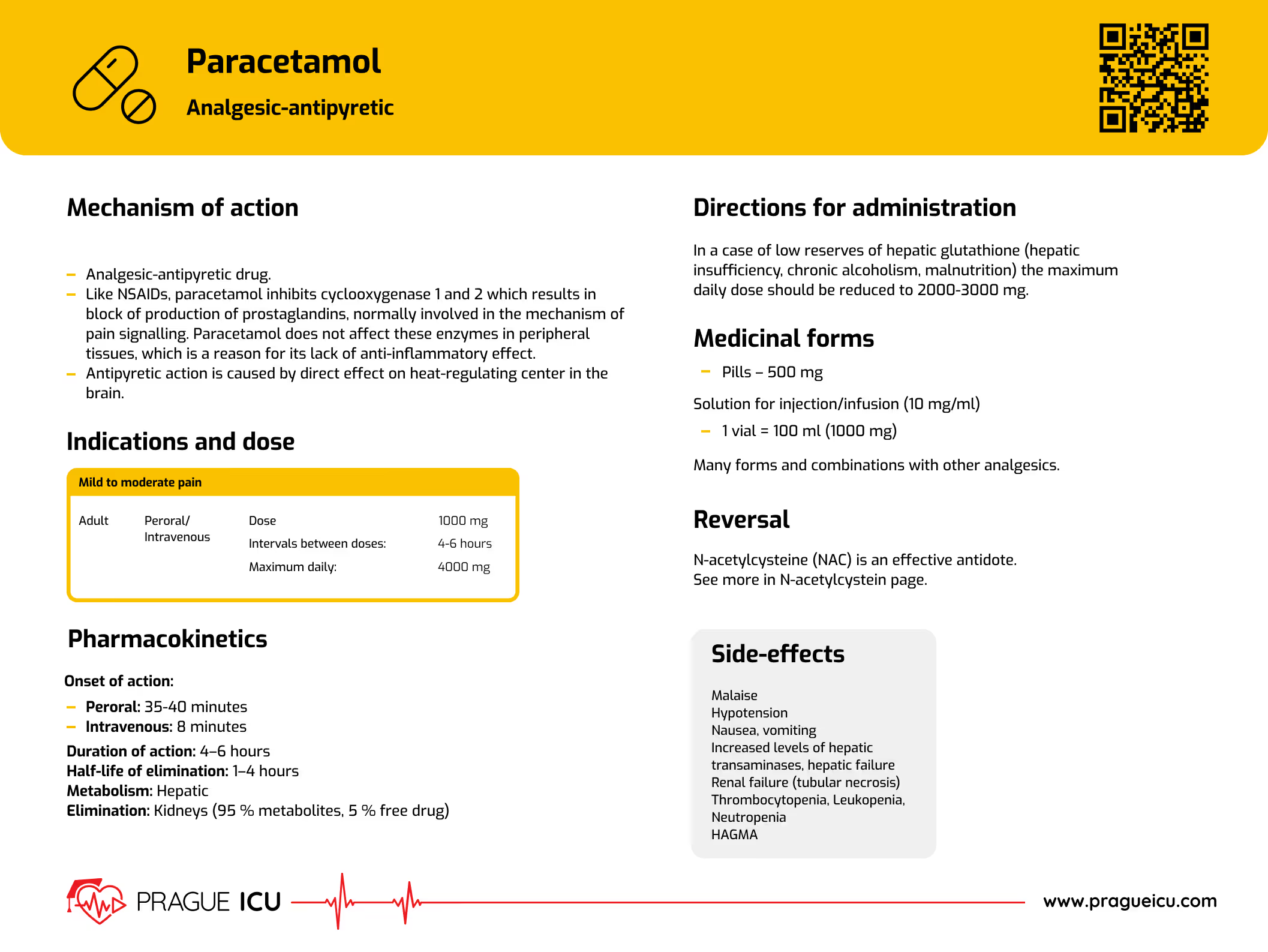
Paracetamol (Tylenol, Panadol)
Mechanism of action
Analgesic-antipyretic drug.
Mechanism of action is still not fully understood.
Like NSAIDs, paracetamol inhibits cyclooxygenase 1 and 2 which results in block of production of prostaglandins, normally involved in the mechanism of pain signalling. Paracetamol does not affect these enzymes in peripheral tissues, which is a reason for its lack of anti-inflammatory effect.
Antipyretic action is caused by direct effect on heat-regulating center in the brain.
Indications and dose

Pharmacokinetics
Onset of action:
- Peroral: 37 minutes
- Intravenous: 8 minutes
Duration of action: 4–6 hours
Half-life of elimination: 1–4 hours
Metabolism: Hepatic
Elimination: Kidneys (95 % metabolites, 5 % free drug)
Directions for administration
In a case of low reserves of hepatic glutathione (hepatic insufficiency, chronic alcoholism, malnutrition) the maximum daily dose should be reduced to 3000 mg.
Medicinal forms
Pills – 500 mg
Solution for injection/infusion (10 mg/ml)
- 1 vial = 100 ml (1000 mg)
Many forms and combinations with other analgesics.
Side-effects
Malaise
Hypotension
Nausea, vomiting
Increased levels of hepatic transaminases, hepatic failure
Renal failure (tubular necrosis)
Thrombocytopenia, Leukopenia, Neutropenia
HAGMA
Reversal
N-acetylcysteine (NAC) is an effective antidote.
See more in N-acetylcystein page.
References



